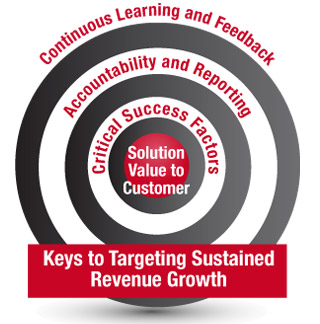|
“Social Media” has become a catch all buzz word for both the latest interactive technological advances and burgeoning forms of social interactions made possible by those advances. Over the past five plus years more and more companies have jumped on seeking to harness the power of social media to support their business development. The question for some is “How can we more effectively incorporate these channels for our business interests?” The question for others is “What’s next? What’s the next wave of advancement?”
The key for realizing present opportunities and for catching the next wave of advance is focusing first not on the technology itself, but on goals of the business and the potential of existing and evolving models of interaction. Having been involved in web development since the mid 1990’s I’ve observed two major pitfalls that distinguish the leaders from the late or inadequate adopters: 1) the focus on technology itself rather than the core business goals in an environment of advancement; 2) the wrong people driving and directing the adoption of technology.
Internet development has sometimes been understood in successive waves. A superficial approach to “social media” at this juncture means a firm is catching the wake rather than the next wave of progress in the digital realm. The vital key to realizing current and coming waves of technology is to first identify the relational and transactional breakthrough the advance represents and second, to connect that to key opportunities in your specific business and industry. Notably also, there are a myriad of social business initiatives worth exploring and learning from across the board.
Below we have offered ten keys for evaluating and maximizing your business’ position in the social media space both in the present and in anticipation of the future.
Ten keys for the present and future:
- Engage at the Executive Level: Don’t relegate the strategic discussion of social media to the marketing department, but consider it carefully at the executive level. Likewise, don’t delegate the decisions as to the technical platforms for delivery solely to the IT department, but consider these decisions comprehensively at the executive level. Additionally, carefully evaluate the “voice” being expressed through various channels and make sure it authentically and effectively represents your brand identity and supports your goals.
- Whatever you are doing, do well. The biggest issue with many companies is a lack of commitment to see through their strategies. Is your social media presence static or dynamic? Is it constantly being refreshed. Is your staff trained and encouraged to participate? Are you seeking to broaden your reach actively? Some business owners question the Return On Investment (ROI) of such activities. That’s a valid and broader concern. But an equally important concern is what image you are projecting with a stagnant or out-of-date presence. It’s a straightforward as implementing basic approaches such as having all your staff “like” posts or other online elements.
- Social Scoring. Social networks are a critical business asset and should be valued. Some companies are now evaluating customers based not on traditional benchmarks such as income, but rather on “influence” as defined by the strength of their social connections. Social media scoring is an up and coming trend. (Examples: http://klout.com/home and http://empireavenue.com/). Consider identifying, cultivating, and rewarding key influencers both internally and externally as you refine your social marketing strategy.
- Focus on enhancing business value. Don’t focus simply on the “brands” of social media (such as Facebook, Twitter, Linked In, etc.), but rather focus on the key interactive models that are available / emerging and connect those to your core business goals. With this in mind, labor to establish social solutions that target and offer specific business value and let that drive adoption and strategy.
- Physical Applications and Proximity Focus. Connect the physical to the virtual. An emerging trend is where interactive tools and applications are connected to the real-time, real world. Examples include:
http://gowalla.com/, a social travel guide that makes it easy to keep up with friends, share photos, highlight your favorite places and discover the world around you all in real time.
http://soundcloud.com/: a platform that puts sound at the heart of communities, websites and even apps and is the catalyst for social interaction and networking.
Think about your own offerings and consider how a real-time connection could enhance your customers’ relationships with your company either with the constitution of the actual product or service or communities of knowledge / practice associated with your product or service. Review emerging applications on smart phones for inspiration. Additionally, posting signage encouraging participation in your social initiatives is a simple, but effective measure.1
- Integrate Your Data. Connect all of your databases of people, prospects, etc. into a unified target for your social media strategy. At a recent social media conference there was a discussion of how in some larger organizations the various databases of prospects, customers, stakeholders, etc. were completely un-related and there was a lack of a unified social media and communication planning. This lack of coordination impeded the impact.
- Integrate Your Delivery and Analysis. Look for technologies / products to integrate your reaches via email marketing, social media, etc. A number of companies are offering this type of integrated approach to maximize impact and centralize control and evaluation. Dave Parker, one of the founders of OneAccord is helping to launch Bundled.com (http://www.bundled.com/) which offers this type of service. Other services include Constant Contact (http://www.constantcontact.com) and Sprout Social (http://sproutsocial.com/signup/start/pro).
- Keep your strategies and content fresh and diversify. A Gartner survey2 shows some social media fatigue among early adopters. “31 percent of Aspirers [younger, more mobile, brand-conscious consumers] indicated that they were getting bored with their social network.”3 Content must be kept fresh, creative, and condensed for easy digestion for short attention spans.
- Communicate and Brand Yourself on Multiple Channels. Anticipate multiple information hubs, modes of collaboration and modes of communication. People are increasingly using mobile devices to access information, communicate, collaborate, etc. Trends are showing that social media contexts are taking on a significant portion (20%)4 of what was traditionally handled via email. Businesses should consider holistically all of these channels and tools as part of their virtual presence and identity, rather than focusing unduly on just their web site for instance. Because of their immense size and presence, businesses should explore and build upon Facebook and Twitter key business presences. See a comprehensive list of third party business aps associated with Facebook (http://www.focus.com/fyi/facebook-marketing-toolbox-100-tools-and-tips-tap-facebook/) and Twitter at http://www.simplyzesty.com/social-media/the-most-comprehensive-twitter-app-list-youll-ever-need/
- Evaluate and Plan. Evaluate your social media strategy and use the right tools for the right messaging. It is important to identify who you are targeting and how to cultivate real relationships versus “thin”5 relationships that aren’t substantive. From a basic perspective, below are some key ways to think about your communication strategies:
Facebook: Research shows that people’s expectation of this media is general information on what is current.
Twitter: Research shows that people expect the information to be explicit about current offerings or happenings and do not wish for extraneous.
E-Newsletter: This media tends to support an emotional connection to the company.6
To take it a step further, there are tools to evaluate where you are and where you want to go. One tool developed by Forester research offers you the ability to analyze your position and prospects in the social space. It helps you analyze when, how and where your clients are using the Internet.: http://www.forrester.com/empowered/tool_consumer.html Another broader grid was created as part of an article in the Harvard Business Review entitled What’s Your Social Media Strategy. 7 The authors break down strategic engagement in four categories: predictive practitioner, creative experimenter, social media champion, and social media transformer. They offer a useful quiz as well to evaluate and determine one’s own quadrant in their schema.
Conclusion
Social media is a dynamic way to advance business interests through intelligence gathering, promotion, and customer engagement. It is critical that businesses engage this trend at the top level to ensure that the strategies and tactics are united, integrated, authentic and on point to meet overall business objectives. The approaches mentioned above will help your company both better realize present and future opportunities.
For more related topic articles see
1The presentation at The Next Web Conference in Amsterdam by Robert Scoble helped inspire and inform this topic. Additionally the blog article by TNW, The Future of Social Media.
2 Gartner Survey Highlights Consumer Fatigue with Social Media, August, 2011 – http://www.gartner.com/it/page.jsp?id=1766814
3 Gartner Survey Highlights Consumer Fatigue with Social Media, August, 2011 – http://www.gartner.com/it/page.jsp?id=1766814
4 Gartner Reveals Five Social Media Predictions for 2010 and Beyond http://www.gartner.com/it/page.jsp?id=1293114
5 The Social Media Bubble, Havard Business Review, Umair Haque, March, 2010 http://blogs.hbr.org/haque/2010/03/the_social_media_bubble.html
6 Nielsen Norman Group Report, Email Newsletter Usability, Executive Summary
7 What’s Your Social Media Strategy, H. James Wilson, PJ Guinan, Salvatore Parise, and Bruce D. Weinberg, Harvard Business Review, July, 2011
David Mitchell, is owner and creative director for Interactive Consulting, a Spokane, Washington firm focusing on emerging interactive technologies, marketing and creative services. Since 1998, David has worked with local and regional firms helping them to develop their web-based strategies and presence and has provided a plethora of design services and products (print, identity, web, exhibit, presentation). David specializes in electronic communications and his firm has been a value added reseller for Constant Contact since 2002.
Contact: davidm@futureinteractive.com
|

|












 Reading a Fortune review of Ed Whitacre’s new book,
Reading a Fortune review of Ed Whitacre’s new book, 

